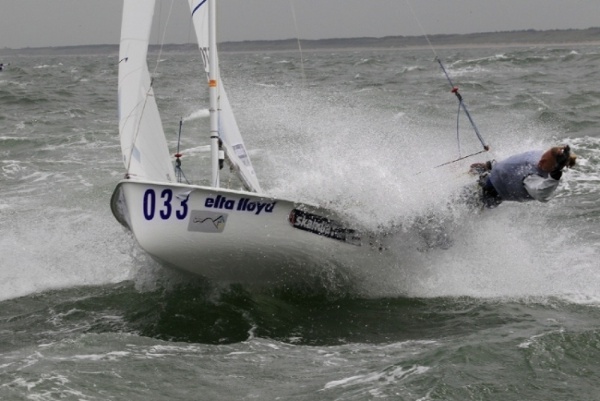

Harnessing technical, tactical and athletic performance, all in one package.
Since our first build in 1993, a Mackay built 470 has helped produce Olympic glory and world champion sailors year on year.
Find out more in the Features section below
Specifications
Hull Length 4.7
Beam Length 1.7
Mainsail Area 9.45 m2
Headsail Area 3.59 m2
Spinnaker Area 12.16 m2
Boat Weight 120 kg
Number of Trapeze Single
Year of status 1969
Type Centreboard Boat
No. of Crew 2
Opt Crew Weight 110 - 145
Hull Material GRP
The 470 is a double handed, mixed crew Olympic yacht.
470 Class Association website : http://www.470.org/
The 470 is a light and narrow boat (length 4.7m and beam 1.7m with a weight of 120kg), that responds easily and immediately to body movement.
The skipper is normally smaller and lighter (1.65m to 1.8m and 55kg to 65kg) and the crew is taller (1.75m to 1.85m yet only 65kg -75kg). The crew's build lets him or her hang far out on the trapeze to keep the boat level in all conditions.
Since our first build in 1993, a Mackay built 470 has helped produce Olympic glory and world champion sailors year on year. Over the years we have refined our knowledge on what makes this boat go fast.
Our boats have a reputation for high strength and stiffness . We focus on these two areas so that the boat will hold high rig tension and not flex in the bow and mid sections.
It also means that the tune of the boat will not change through a season of racing so that the rig tensions and mast bends will not alter as the season progresses.
In 2018 we produced a new mould which we believe is the ultimate for a mixed crew combination heading to Paris 2024.
The mould is designed to maximise the energy from body pumping while also making the boat easy to sail. It was designed with help from sailors, Nathan Wilmont and Jo Aleh, who worked alongside our navel architect, Kevin Trotter.
Part of the success with our latest design comes from adding a little bouyancy in the back of the boat which will make it easier to steer in waves and easier to catch small waves downwind. Bouyancy is also added in the front to balance the changes in the stern.
All of the ribs on our boats are vacuum clamped foam with chopped mat and uni-directional rovings on top. We obtain extra strength from the rigidity of the foam itself.
The construction techniques we use give greater longevity and therefore eliminate the need to replace the boat every year or two. We believe that our construction techniques are as advanced as allowed by the rules.
The building process also involves a considerable amount of custom workmanship. We concentrate on building fewer boats but of a very high quality. We have placed the greatest importance on workmanship, care and attention to detail.
International 470 Class History
In 1963, French architect Andre Cornu designed the two-handed centerboard boat as a modern high performance fiberglass planing dinghy which could be sailed by anyone. And the craft so influenced European sailing that the 470 is directly credited with drawing new sailors to the sport during the 1960s and '70s.
The 470 has been an Olympic class boat since 1976. It is sailed today for both family recreation and superior competition by more than 30,000 sailors in 42 countries worldwide.
In 1988, women officially entered Olympic sailing competition with the first-ever 470 Women's event. This boat is especially well-suited to women's competition because of its light weight, maneuverability and light crew weight requirement.
Click here to view more information on the history of the 470.
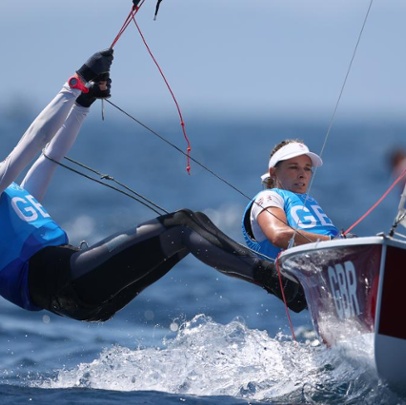
470: Recent Success for Mackay Boats
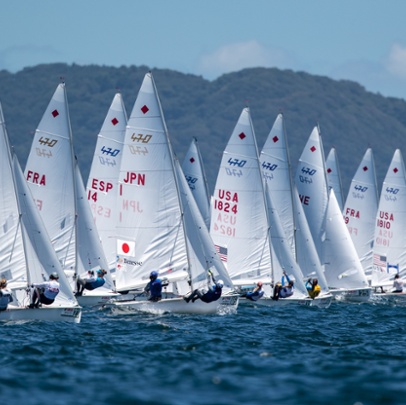
470: The history of its success
Can mackay's customise the layout of the boat.
Yes. Nearly all 470 are customised to suit your own preferences.
What can be customised?
We offer options for most control systems on the boats. Go to our 470 order form to see the options available. International 470 Package - Mackay Boats - NZL
Can you do other fitout options not on the list?
Yes. Many teams send us pictures with their own personal systems for us to copy.
What fitout options do the top crews choose?
All teams have something slightly different, but generally most top teams choose the continuous rig tension system (Option c) , the 4:1 up with 2:1 down centreboard system (Option a) and the carbon jib brackets. These are the only 2 systems that most top teams have in common.
How to do a gelcoat repair?
Small gel coat repairs are relatively easy to do.
What is Gelcoat made up of?
Gelcoat is a polyester product that is cured by using a catalyst called MEKP. (Methyl Ethyl Ketone Peroxide)
MEKP is a dangerous substance and should be treated as such when using, being very careful not to get any on your skin or in your eyes.
How can I get the catalyst - MERK?
We cannot ship MEKP so you will always need to buy it separately from your local marine store or fibreglass manufacturer.
How much MERK do I need?
The amount of Catalyst varies depending on the conditions you are using it in, but around 2%-3% will always work.
It is best to use a small syringe or dropper to get the required catalyst rate.
If you have mixed 100gm of gelcoat, then you are aiming for 2ml of catalyst.
What are the Gelcoat colours?
Gelcoats colours are not always a 100% perfect match.
Colour will vary depending on the depth of the repair and the batch.
470 White- LS30 White PA 337
470 Grey- Grey RAL 7035
Blue = is supplier by Nuplex who have their own code which is not an international code
Does Mackay Boats supply gelcoat?
We supply a small tin (of each relevant colour) with each new boat.
Order additional gelcoat from our store, although it cannot be shipped by courier.
How do I do gelcoat repairs?
Doing gelcoat repairs is an art that improves with experience.
Making sure the surface is prepared well and keyed up is critical.
Overfill and then sanding back is a slow and time-consuming process.
Be very careful not to scratch the boat around the repair.
You shouldn’t sand the original surface around the repair with any paper coarser than 600grit.
Mask around the repair to protect the boat.
You can initially use a file or 150g to take the high parts off the filling, but don't use the coarse paper for too long or you will end up with scratches in the finished repair.
Once you have it fair with 600g, you can work your way through the sandpaper grades until you finish with 1500grit before cutting and polishing.
We would typically use 600g, then 800g or 1000g, then 1200g, then finally 1500g.
How do you fit a mylar gasket to a 470?
Please watch a demonstration: Fitting a mylar gasket
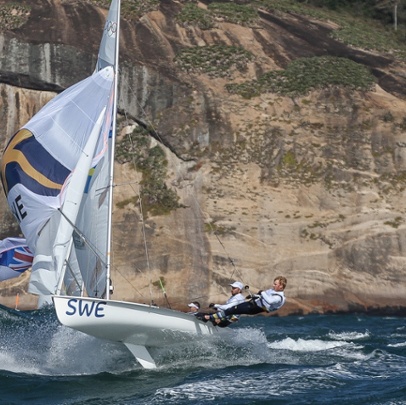
470 Tuning Tips
Are you sure you want to change currency.
The Worldwide Leader in Sailmaking
- Sail Care & Repair
- Sailing Gear
- Find A Loft
- Sail Finder
- Custom Sails
- One Design Sails
- Flying Sails
- New Sail Quote
- 3Di Technology
- Helix Technology
- Sail Design
- AEROTECH Spinnaker Cloth
- NPL RENEW Sustainable Sailcloth
- Sailcloth & Material Guide
- Polo Shirts
- Sweaters & Cardigans
- Sweatshirts & Hoodies
- Accessories
- Shop the look
- Mid & Baselayers
- Deckwear & Footwear
- Luggage & Accessories
- Fall Winter '24
- North Sails x 37th America's Cup
- Sailor Jackets
- SALT X North Sails
- NS x Slowear
- T-shirts & Tops
- Sailor Jacket
- Sustainability
- North Sails Blog
- Sail Like A Girl
- 37th America's Cup
- Icon Sailor Jacket
- Our Locations
- Certified B Corporation
- North SUP Boards
- North Foils
- North Kiteboarding
- North Windsurfing
SAIL FINDER
SAILING GEAR
COLLECTIONS & COLLAB
COLLECTIONS
WE ARE NORTH SAILS
ACTION SPORTS
Popular Search Terms
Organic cotton
Scuba fleece
Drawstring hood
Utility pocket
Stand collar
Sorry, no results for ""
Subscription
Welcome aboard.
We want to make our emails as relevant as possible for you.
Interests saved
Something went wrong, please try again
Welcome to North Sails
Stay up to date with the latest North Sails news.
Receive a 10% discount code for your first apparel order. Excludes sails and SUP’s. See our Terms and Conditions .
Yes, I agree to the terms of use and privacy policy.
470 SPEED GUIDE BY SÎME FANTELA
Who sails the 470.
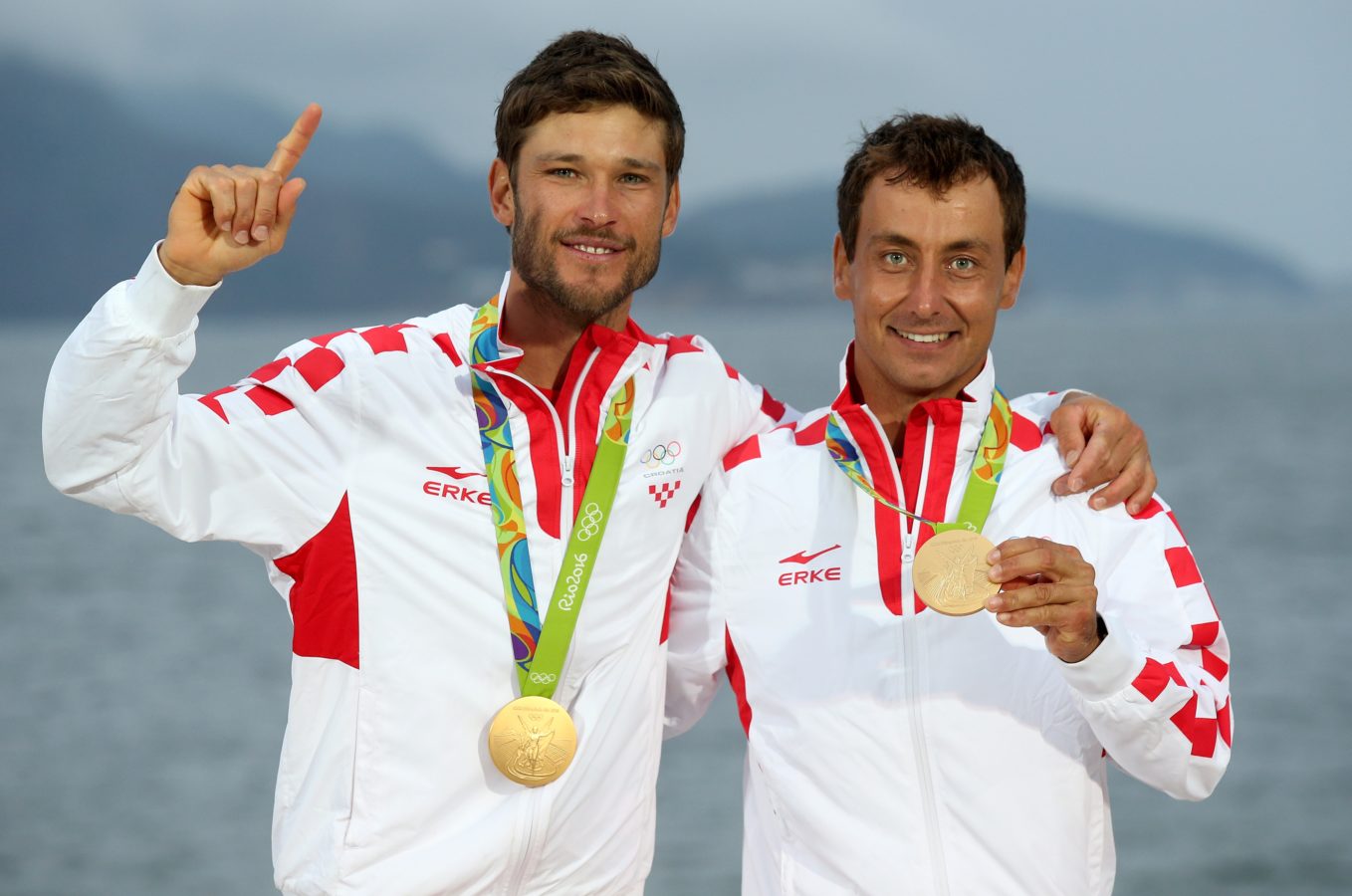
What does it take to be successful in the 470?
Who does what on the boat, what are the keys to rig set-up, what are the keys to rig tuning.
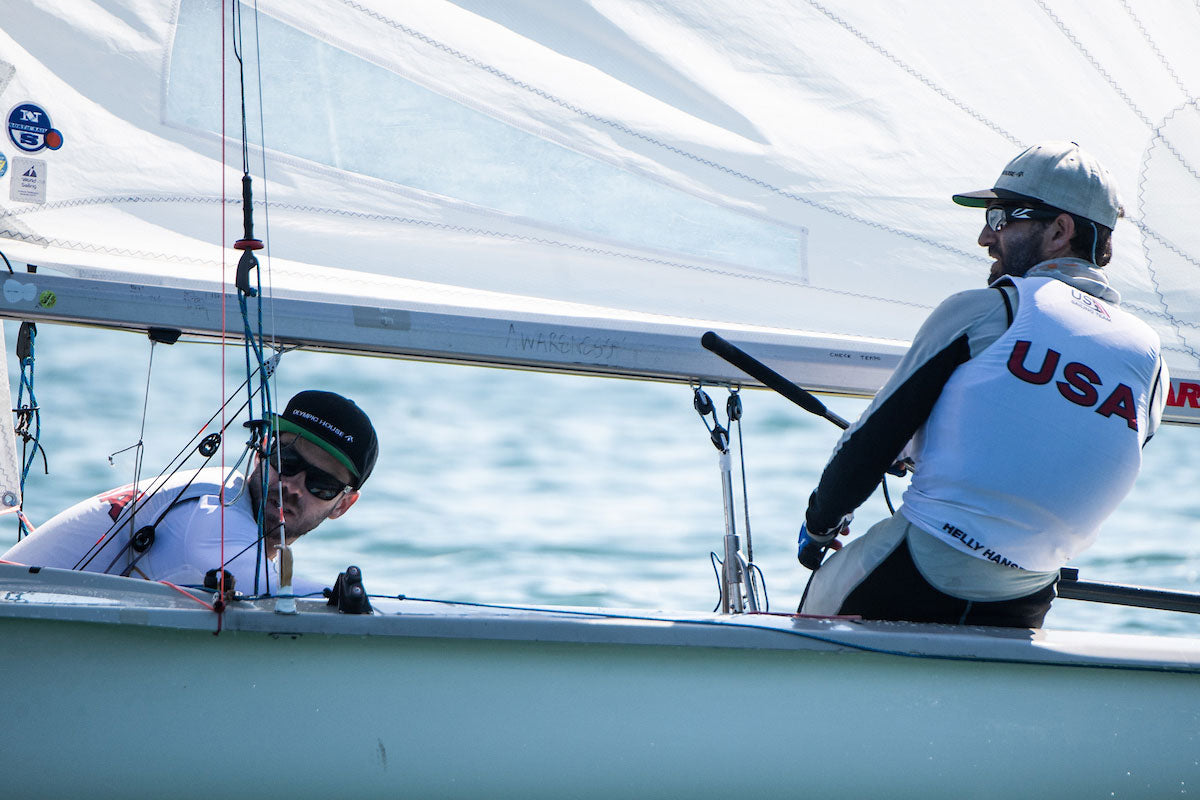
Upwind Sailing
Where does each person sit on a 470 in light air, what are the key changes in different conditions, what do you focus on when trimming the 470 main, what do you focus on when trimming the 470 jib, what are the key adjustments to make when wind and sea state increase, any other advice about gear changing in a 470, what's the typical conversation between 470 helm and crew.
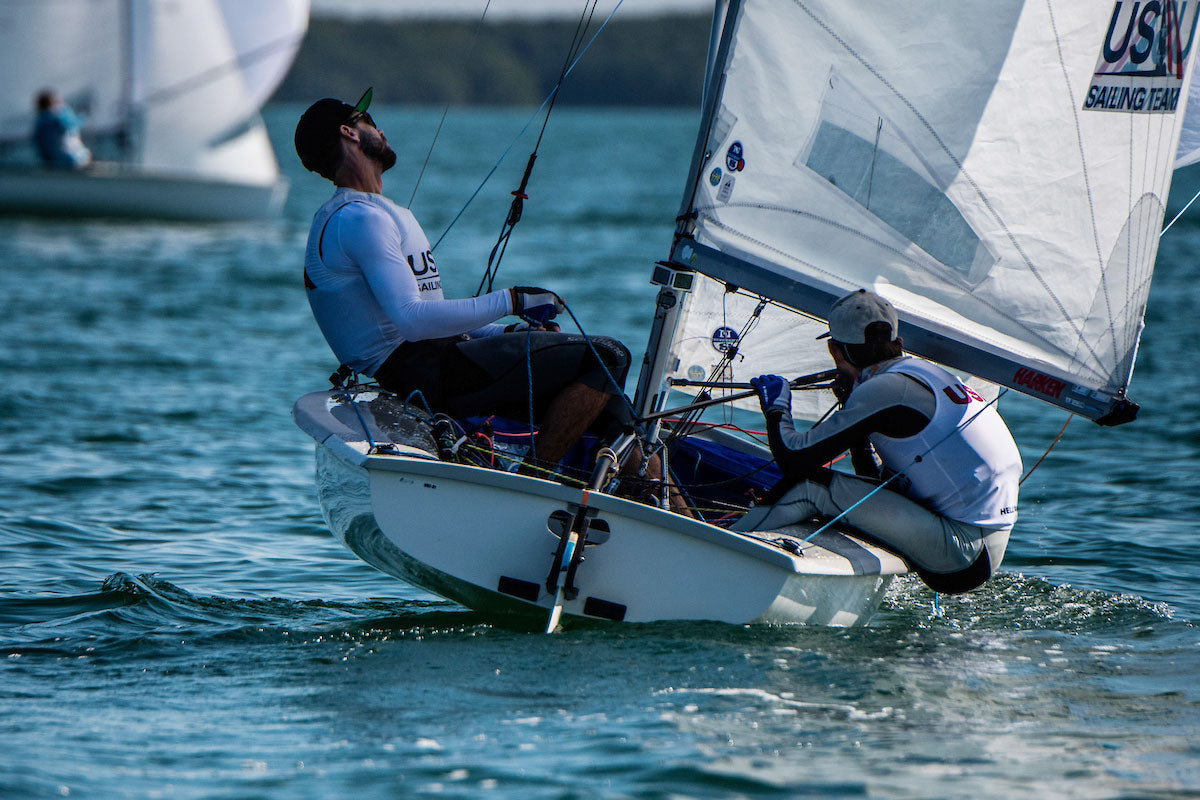
Downwind Sailing
What 470 spinnaker would you recommend, where does each person sit in a 470 downwind, what are the key adjustments to make sailing downwind, what’s the most important thing about 470 trimming downwind in light air, what’s the most important thing about 470 trimming downwind in heavy air, what is a typical conversation downwind.
- What mode do we want to achieve (high and fast, or low and slow)?
- Is the Oscar flag up so we are allowed to pump?
Any special considerations to sail the 470 well downwind?

Boat Handling
Top three tips to starting a 470 well.
- Try to keep the flow on the rudder and centerboard as long as you can. Once you lose that, it can take some time to attach again.
- Always fight for space down to leeward. If you don't have enough, you're not going to survive the first 100 meters.
- Identify the last possible moment for a double tack. And whether you double-tack or not, know the right time for good acceleration and the right exit angle.
Any tips for 470 downspeed boat handling?
What is the most common mistake when tacking a 470, what does each person do in a tack, key tip for good light-air tacks in a 470, key tip for good heavy-air tacks, key tip for good light-air jibes, key tip for good heavy-air jibes, what’s the best way to set a 470 spinnaker who does what.
- Come in off the trapeze wire.
- Take the spinnaker tack out of the spinnaker bag with one hand, while pulling on the windward barber-hauler/twing with the other hand.
- Hook the pole to the sheet, topping lift, and mast - Jaws up!

What’s the key to a good 470 spinnaker takedown?
Personal Tip: We always have a windward takedown, because we have a storage bag on each side of the boat.
Doing a 720 penalty turn is slow. What are the keys to minimizing the pain?
How easily does the 470 broach or capsize, how do you recover from a 470 capsize, what are the most common boat helming mistakes made in the 470 class, any suggestions for drills to improve 470 boat handling.
GET IN TOUCH
REQUEST A QUOTE
BROWSE ALL SAILS
FIND YOUR SAIL
Latest north sails news.
16 September
AEROTECH FAQ
Travel journal: at home in tarifa.
07 September
AEROTECH: A REVOLUTIONARY HIGH-PERFORMANCE WOVEN DOWNWIND SAILCLOTH
- Refresh page
We use Cookies to keep our website safe and secure, to enhance your website experience, to provide social media features and to help us analyse our site. To learn more about the cookies we use and to learn how to manage your cookie preferences, please see the Cookie Policy section of our Privacy Policy .
USA 470 Class Association
Welcome to the usa 470 class association.
The story of the 470 – still the best boat to bring sailing to… 470 Sailing – Enjoy the Experience #470Class #BeTheBest #470Sailing Posted by 470 Olympic Sailing on Wednesday, December 7, 2016
US 470 Class Association
Class contact information.
Click below
Class Email
Class Website
One-Design Class Type: Dinghy
Was this boat built to be sailed by youth or adults? Both
Approximately how many class members do you have? 35
Photo Credit:
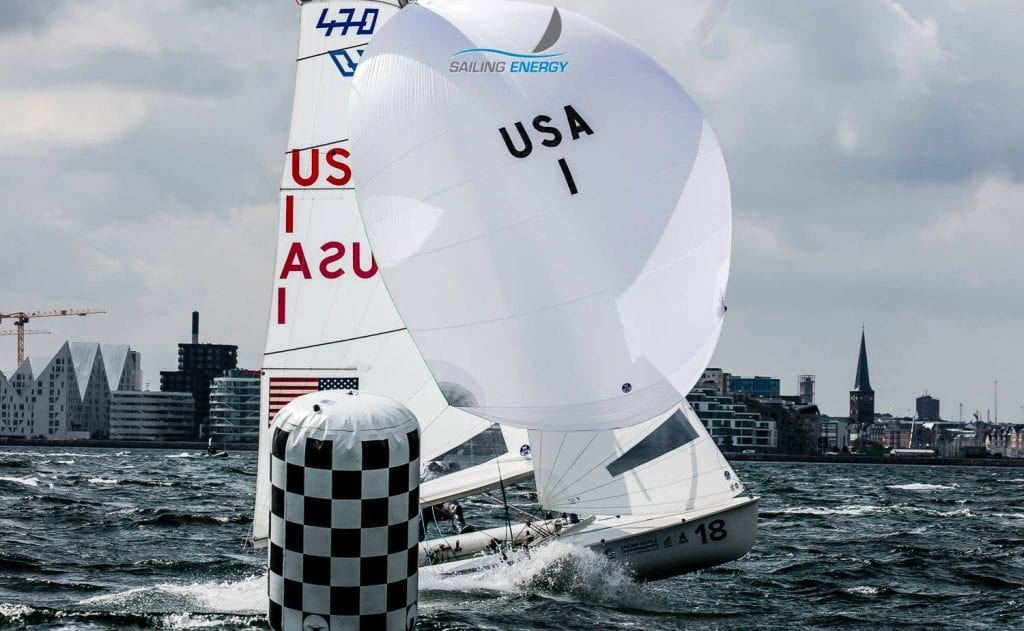
Photo Credit: Will Ricketson, US Sailing Team
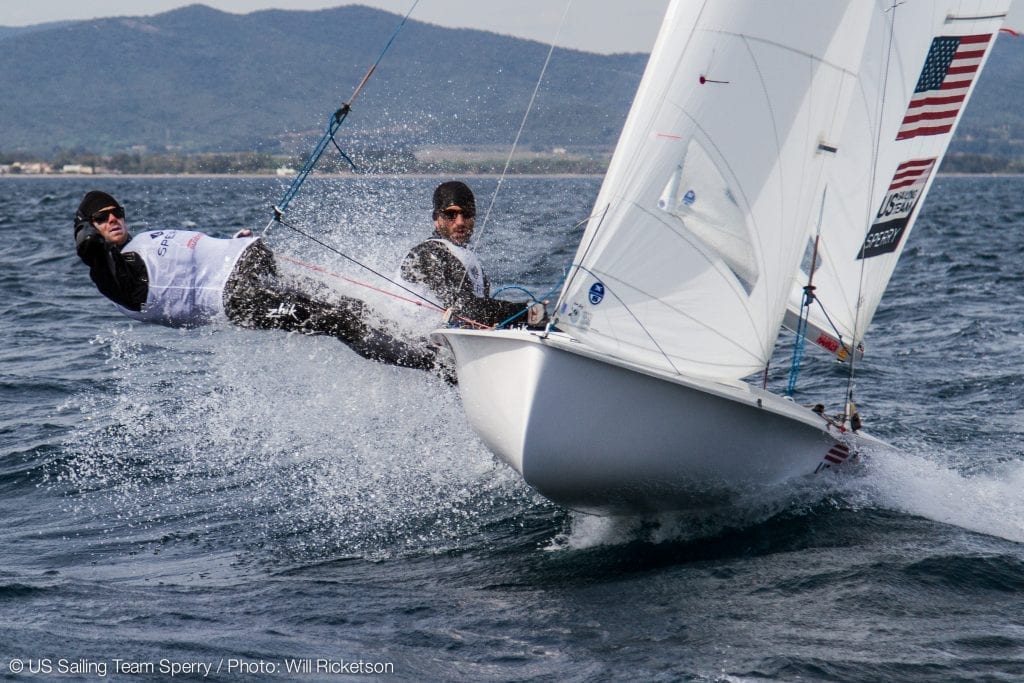
About US 470 Class Association
Olympic equipment of choice for the men’s and women’s two-person dinghy – representing the world of two-person spinnaker sailing at the Olympics. The 470 has been raced at every Olympics since 1976. In 1988, a women’s event was added. For the 2024 Olympics, the 470 will revert to mixed.
Boats Produced: 34,500
Class boat builder(s):
Mackay Boats (NZL), Ziegelmayer (GER), Sports Center (POL), Yamaha (JPN)
Approximately how many boats are in the USA/North America? 100+/-. 1850+/- registered all time in the USA.
Where is your One-Design class typically sailed in the USA? List regions of the country:
Miami, FL; Newport, RI
Does this class have a spinnaker or gennaker? Yes
How many people sail as a crew including the helm? 2
Ideal combined weight of range of crew: 300+/-
Boat Designed in 1963
Length (feet/inches): 4.7m
Weight of rigged boat without sails: 120kg
Draft: 0.1m
Mast Height: 7.2m
Back to One-Design Central
Copyright ©2018-2024 United States Sailing Association. All rights reserved. US Sailing is a 501(c)3 organization. Website designed & developed by Design Principles, Inc. -->

By Product Categories
Small Boat Blocks
Big Boat Blocks
Complementary Hardware
Travelers & Genoa Leads
Mainsail Handling
Headsail Handling
Mooring Solutions
Spare Parts
Accessories
Harken Canvas
Sportfishing
Fly Soft-Attach Blocks
Carbo Air Blocks
Small Boat Classic
Flip-Flop Small Boat
GP Catamaran Ceramic Mainsheet Systems
Protexit™ Exit Blocks
Through-Deck
Wire High-Strength
Dinghy Vang
Small Boat Deck Organizers
Midrange Classic
Midrange Deck Organizers
Zircon Blocks
Element Blocks
Black Magic Air Blocks
Cruising ESP Blocks
Megayacht Blocks
Stainless Steel Blocks
Black Magic Air Runners
FlatWinder Powered Blocks
Mastbase Blocks
Over-the-Top
Crossover Blocks
Big Boat Deck Organizers
Cam Cleats & Kits
Cam Cleat Accessories
Cam Cleat Bases
Stand-Up Bases
Deck Organizers
Spinnaker Pole Cars
Soft Attachments
Fixed Padeyes
Removable Padeyes
Bolt-Down Fairleads
Grand Prix Jib Leads
Halyard Tensioners
Tiller Extensions
Peter's Desk Drawer
Dinghy Jib Leads
Crossbow Pivoting Self-Tacking Jib Traveler
13 mm Micro
22 mm Small Boat
27 mm Midrange
32 mm Big Boat
Windward Sheeting
42 mm Mini-Maxi
T-Track Genoa Lead
Access Rail System
13 mm AA Battcar System
22 mm A Battcar System
27 mm B Battcar System
32 mm C Battcar System
18 mm Switch Battcar System
26 mm Switch Battcar System
26 mm Trysail Switch
32 mm Switch Battcar System
32 mm Trysail Switch
40 mm Switch Battcar System
40 mm Trysail Switch System
Furling Mainsail Outhaul Systems
Single Line Reefing
Harken Vang-Master
Carbo Racing Foil
Small Boat Furling
Small Boat Underdeck
Reflex Furling
MKIV Jib Reefing & Furling
MKIV Underdeck Jib Reefing & Furling
Furling Accessories
Powered Furling
MKIV Ocean Furling
SnubbAir (Not a Winch)
Grand Prix Winches
Air Winches
Circuit Breakers
Analog Switches
Digital System Switch
Aluminum, Chrome & Bronze Winch Handles
Carbo OneTouch Locking Winch Handle
Service Kits
CLR Mooring Winches
Electric Captive Reel Winches
Hydraulic Captive Reel Winches
UniPower Radial
Single-Acting Integral Backstay Adjuster
Single-Acting Cylinders
Locking Cylinders
Double-Pull Cylinders
Grand Prix Cylinders
Hydraulic Cylinder Rod End Blocks
Hydraulic Cylinder End Fittings
Control Valves
Control Manifolds
Control Panels
Compact Control Panel
Rotary Pumps
Hydraulic Pump Handles
Power Systems
Repair Kits
Ball Bearings
Block Spare Parts
Traveler Cars
Furling Spare Parts
Winch Spare Parts
Winch Service Kits
Blockheads Gear
Promo & Gifts
Marine Grip
Blue Performance
Jeep/Truck tops
Garage storage
One-design Covers
Boat accessories
Canvas bags
By Type of Sailing
Dinghy / One-Design
Offshore Racing
Coastal / Day Cruising
Bluewater Cruising
Megayachts / Custom
Service Guide
Tech/Service
deck layouts
Data Sheets (SDS)
How to choose
System diagrams
Calculators
Reeving diagrams
Traveler Purchase Selection Guide
How to Choose
Testimonials
Hoister Videos
Request a Quote
Request Samples
Fabric details
Cover Styles
Canvas Videos
Contract Services
Materials and Components
Our Equipment
Contract Cut-and-Sew Project Spotlight
- Harken at the front
- Safety & Rescue
Support / One-design deck layouts
470 Deck Layout

Spinnaker Pump Halyard System
A 1:2 reverse purchase on the halyard allows the skipper to raise the spinnaker twice as fast. Pulling the pump handle .6 m (2 ft) off the cockpit floor raises the spinnaker 1.2 m (4 ft). A 1:5 shock-cord halyard take-up system automatically manages accumulating line during the rapid chute deployment.

The cascaded vang uses super strong single, double, and triple 16 mm blocks for a powerful 16:1 mechanical advantage. The skipper can play the vang from either side of the boat.

Two-Car Mainsheet
This fast-tacking two-car system halves the distance a single car would travel. The bridle and the 2:1 side-to-side traveler controls raise and lower the floating mainsheet block for perfect mainsail twist. Mainsheet tension tightens the leech and reduces twist.
If you would like to link to or reprint this article please contact [email protected]
Class History
The International 470, designed in 1963 by 505 sailor André Cornu, is a high-performance planing dinghy for both men and women. Responsive to weight placement, this two-person one-design is tactically demanding and requires fluid coordination between the skipper and crew. The 470 is easy to sail, but racing and flying the spinnaker from the trapeze provides additional challenges for sailors. The 470 made its Olympic debut in 1976, and in 1988 was selected for the Games first women's sailing event.
Links International 470 Class McLube™ Harken Canvas
Boat Specifications
Length: 4.7 m, 15 ft 5 in Weight: 120 kg, 264 lbs Sail Area: 12.7 sq m, 137 sq ft Jib: 3.58 sq m, 39 sq ft Main: 9.12 sq m, 98 sq ft Spinnaker: 13 sq m, 140 sq ft

Related products

29mm Block — Swivel

13mm Low-Beam Track — 1.2 m

16mm Double Block

16mm Double Block — Becket

16mm Triple Block

16mm Cheek Pivot Block

16mm Through-Deck Block

29mm Stand-up Block

29mm Through-Deck Bullet Block

Micro Cam-Matic® Kit — X-Treme Angle Fairlead

22mm Eyestrap Block

22mm Cheek Block

13mm Car — Pivoting Shackle

Standard Cam-Matic® Cleat - 150
Product categories.
- United States
- New Zealand
- United Kingdom

Published on October 25th, 2021 | by Editor
470 Class: Optimistic about its future
Published on October 25th, 2021 by Editor -->
There are some one design classes, such as the Star and Finn, which can make the transition when their boat is no longer used in the Olympics. Their history, popularity, and core constituent can carry on the torch. But for the 470 Class, their status seems less secure.
While the 470 Class has nearly 60 years of history, its commitment to Olympic-level competition puts a lot of eggs in one basket.
Excessive kinetics are now the norm, requiring elite fitness for peak performance. And now the class will have its boat used in the new Mixed Two Person Dinghy event for Paris 2024, thus impacting its current male and female division participation.
However, 470 Class President Andreas Kosmatopoulos remains optimistic in this report to class members:

A new Olympic era has begun for the 470 class. Merging two Olympic disciplines into one has created the exciting Mixed Dinghy Event for 2024 and beyond. Strong and immediate competition has already provided new challenges and great opportunities for our many recently-formed teams.
Olympics The Tokyo Olympic Games was a triumph for the 470 Class. The quality of the fleet was impressive. The best-ever 470 Olympians, Hannah Mills from Great Britain and Mathew Belcher from Australia, received their third Olympic medal each, both with two gold and one silver. Incredible!
As a former double-handed sailor, the images I most cherished were the reactions at the last race’s finish line at the Europeans, Worlds, and Olympics — that last hug with your teammate knowing that the journey had now come to a close.
Olympic Gold and Silver medals in the women’s class were won by boats built over three years ago — proving the impressive durability and quality of the 470 Olympic equipment. Juniors aged 16th and 17th years old competed at the Tokyo Olympic Games, a lifetime opportunity achieved by their skills and the existence of the 470 dinghy! Rules We have received many messages regarding the Oscar flag (kinetics rule), compasses (with tactical features), and other concerns. We are fully aware of the necessity of change and the impact those decisions will have on your future preparations. We respect that time is limited and want to work with you for the best outcome.
According to our constitution there is a specific procedure that we must follow in order to decide and validate any and all potential class changes. Soon we will announce an online Extraordinary General Assembly Meeting. Should changes be adopted, those items will then need to be approved by World Sailing in the coming year. Meanwhile, any changes will become public knowledge so that you may craft your training accordingly.
We are working hard and carefully in order to provide equal opportunities and a fair environment to all the sailors and coaches who wish to express their voice. A survey will be released soon but please continue to send your thoughts, comments, and suggestions to the 470 Management Committee at [email protected] . All topics appreciated!
And, as ever, please also work with and through your MNAs. We look forward to your recommendations and proposals. This is truly a world-wide effort.
Vision With the 470 we have a powerful global tool. The International 470 Class Association will focus on world-wide development and support for teams from emerging nations. This includes an emphasis on equipment, coaching, and participation opportunities.
Our strategy is very much centered on a wider expansion of the 470 class and the attraction of youth to sailing. We are encouraged by many ongoing discussions with our stakeholders. Together we will strengthen our class and create new partnerships and synergies.
I wish you all fair winds.
Editor’s note : The problem with asking class constituents what they want is the consensus does not include the voice of people who quit the class. Additionally, the loudest voices tend to be those at the top of the fleet, and their desires tend not to be in line with participants down the rank that create the foundation for any enduring class.
Paris 2024 Olympic Sailing Program Men’s One Person Dinghy – ILCA 7 Women’s One Person Dinghy – ILCA 6 Mixed Two Person Dinghy – 470 Men’s Skiff – 49er Women’s Skiff – 49erFx Men’s Kiteboard – Formula Kite Class Women’s Kiteboard – Formula Kite Class Men’s Windsurfing – iQFoil Women’s Windsurfing – iQFoil Mixed Multihull – Nacra 17
Venue: Marseille, France Dates: July 26-August 11
Details: https://www.paris2024.org/en/the-olympic-games-paris-2024/

Tags: 470 , Andreas Kosmatopoulos , Paris 2024 Games
Related Posts

America One Racing Performance Report →
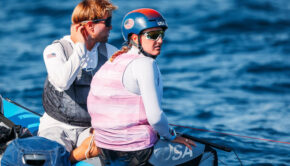
Daniela Moroz: Must fix flawed system →

Olympic Sailing returns to Long Beach →
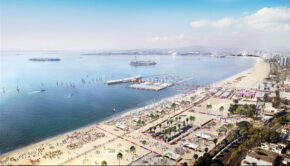
Haunting memory from 1984 Olympics →
© 2024 Scuttlebutt Sailing News. Inbox Communications, Inc. All Rights Reserved. made by VSSL Agency .
- Privacy Statement
- Advertise With Us
Get Your Sailing News Fix!
Your download by email.
- Your Name...
- Your Email... *
- Name This field is for validation purposes and should be left unchanged.

470 Speed Guide by Sîme Fantela
2016 Gold medalist and North Sails expert Sîme Fantela answers your questions about sailing the 470...
Who sails the 470?
The 470 has been an Olympic double-handed class since 1976, with separate men’s and women’s divisions since 1988. Today most sailors are full-time Olympic hopefuls, and because the boat is so technically and physically challenging many teams stay together for several four-year training cycles. The boat can be sailed by a range of weights and heights, though most helms are shorter and smaller than their crews to maximize righting moment. Men’s helms range from 55-65kg and crews from 65-80kg, aiming for a combined weight between 130-140kg. Women’s teams are usually bit smaller, targeting between 120-130kg of combined weight.

What does it take to be successful in the 470?
You need to be passionate about it. You need to be focused on the training process, you really need to enjoy the boat and sailing and the hard work that comes with it. Competing successfully is not only about sailing and tactic; it’s a lot about the technical side of the class. To be successful, you need to understand how the boat works, how the foils work, how the mast and the sails work, and how all these things work together. It’s very important to feel all these things, so you can tune the boat well in different wind ranges.
Who does what on the boat?
Upwind, the helm is steering and controlling the mainsheet, cunningham, and vang, as well as adjusting the centerboard up and down. The crew is responsible for trimming the jib, and obviously for hiking and the balance. Most of the boat handling and the kinetics are the crew’s job.
Downwind, the helm hoists the spinnaker and trims it temporarily while the crew is setting or dousing the pole. The crew trims the spinnaker and balances the boat both fore and aft and side to side.
What are the keys to rig set-up?
The most important aspect is to understand what suits your team. If you are a standard size (small-light helm and tall-heavy crew), follow the North Sails Tuning Guide . If you are not a standard size, you will have to work at finding the right mast stiffness, spreader length, mast step position, centerboard pivot position, centerboard stiffness, and model of sails. Then you can start to fine tune the boat and rig, depending on feedback from sailing against other teams.
What are the keys to rig tuning?
The key adjustment is rig tension. There are two different setups: the “standard” has less purchase, and the “soft” is easier to play while racing. You can choose which kind of purchase you want when ordering a boat. Many experienced teams choose the soft purchase, so it’s not just how much experience you have; everyone has their own tuning styles and ways. There are some very useful photos of this and other systems on the McKay Boats website .

Upwind Sailing
Where does each person sit on a 470 in light air.
Sit as far forward as possible. If the crew is not on trapeze, then they sit on the deck and try to press the boat flat by leaning out. As the breeze comes up, they move onto the trapeze, first with knees bent and then with knees straight. Once the crew is fully extended, the helm starts to hike.
What are the key changes in different conditions?
It is very important to understand when you go from underpowered to overpowered. Sail trim and crew position are important adjustments until you are fully hiking. Then you start depowering the boat with the different controls.
What do you focus on when trimming the 470 main?
Trimming the main, the focus is the leech and twist. The perfect amount of twist depends on the sea state. If it’s flat water, I like a tight leech, but I don’t ever close it completely. In waves, more twist makes it easier to steer.
What do you focus on when trimming the 470 jib?
You need a different setup depending on whether it’s flat water, chop, or swell: more twist in the waves, and less twist for flat water. I play with the lead in gusts and lulls; you can move it fore and aft, and also in and out (there are 5 positions, and 1 is max inboard while 5 is max out). In light wind, you want it inboard and forward; for strong wind, ease it out and/or move it aft. This helps to open or close the slot between main and jib.
What are the key adjustments to make when wind and sea state increase?
Key adjustments are centerboard height, jib lead, vang, outhaul, cunningham, and the height of the jib. Let’s say the wind is starting to build. To depower the main, pull on cunningham, outhaul, and vang. For the jib, lower the height, pull on jib cunningham, and move the jib lead aft/out. If you are still overpowered, raise the centerboard.
Any other advice about gear changing in a 470?
You need a lot of hours in the boat to understand how it feels in different conditions and what the boat wants to be quick. You need to have all these tools in your hands and to adjust when conditions change, or when you want to change the mode of sailing. If you want to go quick and low, or slow and high, you need to be able to do it—and this doesn’t come easily.
What’s the typical conversation between 470 helm and crew?
It’s mostly about who is doing what on the boat. On our boat, as helm I was doing the tactics and my crew was focused on speed, but sometimes when the conditions changed we would swap roles; I would focus on speed and the crew would take over tactics. The other loop is talking about boat speed: how do we feel, should we change something? You always compare yourself with the boats around you about the speed and mode of sailing.

Downwind Sailing
What 470 spinnaker would you recommend.
North Sails has three different models: V2, A2, and V3. The V2 is flatter on the top and easier to steer to. The A2 has the biggest projected area, it’s the most powerful one. The V3 is a bit fuller on top. So each team should decide which kite to use depending on their style of sailing—if they want to sail low, or want to play with the waves and sail high. For more details, view the North Sails 470 Inventory.

Where does each person sit in a 470 downwind?
Downwind, the helm sits on the leeward side and the crew sits to windward to trim the spinnaker. In lighter breezes the crew sits as far forward as possible, close to the shroud; one trick in super-light winds is to sit in front of the shrouds, just at the splash rail, to lift the stern out of the water and minimize the wake.
As the breeze comes up, the crew moves aft—sometimes even behind the traveler bar. In really extreme big breeze and waves, both the helm and crew will sit all the way aft, close to the rudder, to put the bow up and surf as much as possible.
What are the key adjustments to make sailing downwind?
It’s important to feel the sea state and decide how high to sail compared to the waves; you don’t want to stop in the waves, you want the boat to plane. You have to find your own way of sailing depending on the fleet, the waves, and the wind. The fastest teams spend a lot of time sailing the boat downwind in different wind conditions, because in this class the biggest gains are made downwind.
Downwind, you want the main as deep as possible in almost all conditions. Ease outhaul and cunningham, and adjust the vang so that the leech is open for a nice flow around the main. Having the top batten parallel with the boom is good as a starting point, and then you fine tune from there.
Another good rule is to keep the spinnaker pole parallel with the boom as it goes in and out. If you let out the boom, move the spinnaker pole aft. If you start to sail higher angles and pull in the boom, let the pole forward. These rules work in most conditions.
What’s the most important thing about 470 trimming downwind in light air?
Keep the slots open between kite, jib, and main. If it’s really light, so you can’t pull back the spinnaker pole, you’ll need to trim in the main.
What’s the most important thing about 470 trimming downwind in heavy air?
Let the boom out to the shroud and raise the pole to close the leech of the kite, keeping as much power as you can handle. Then focus on crew work: working the waves, balancing the boat. The higher the centerboard, the faster you will go, so you want to lift it as much as possible—but that depends how much stability you need. As a beginner, start with the centerboard down more, to have a more stable boat. As you get better controlling stability with bodies and sails, the centerboard can go higher and you’ll go faster.
What is a typical conversation downwind?
Here are the two questions:
- What mode do we want to achieve (high and fast, or low and slow)?
- Is the Oscar flag up so we are allowed to pump?
If we are pumping, usually the helm counts down the timing: three, two, one, pump. We try to move our bodies together and pump the main and spinnaker together. The most important thing downwind is to catch waves while being synchronized as a crew.
Any special considerations to sail the 470 well downwind?
You have to listen to what the boat tells you and how it feels, then listen again to how it reacts to a change of mode. One mode might suit your team best, but you still have to master the others to be quick in different tactical situations.
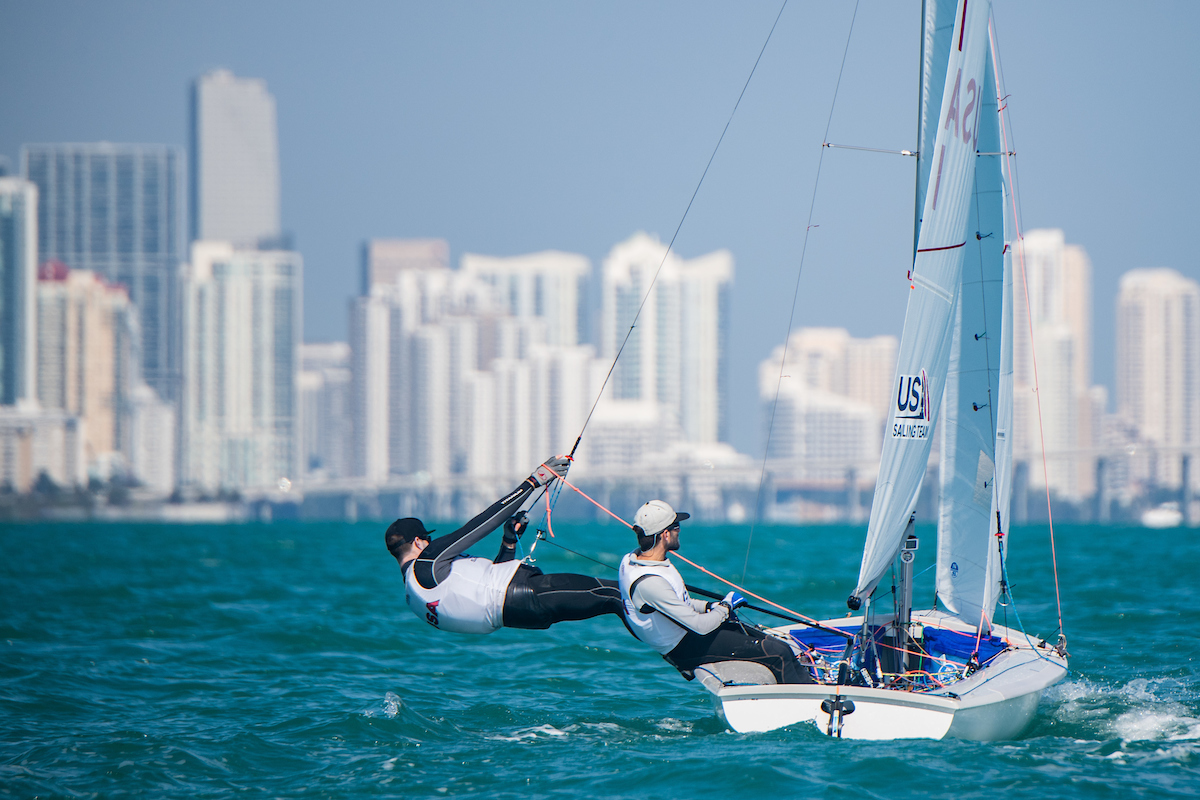
Boat Handling
Top three tips to starting a 470 well.
- Try to keep the flow on the rudder and centerboard as long as you can. Once you lose that, it can take some time to attach again.
- Always fight for space down to leeward. If you don’t have enough, you’re not going to survive the first 100 meters.
- Identify the last possible moment for a double tack. And whether you double-tack or not, know the right time for good acceleration and the right exit angle.
Any tips for 470 downspeed boat handling?
The most important thing is to keep flow on the rudder and centerboard. If you are going slow, keep the main in. If you have to kill speed, luff the jib but try to keep flow in the main as long as possible.
Work bodies and sails together. It is really crucial to be synchronized: at the start, both helm and crew go to leeward, prepare for the acceleration, and then squash the boat flat and trim in main and jib at the same time. Sheeting and flattening the boat together is the only hope for a good start.
What is the most common mistake when tacking a 470?
Not synchronizing helm and crew with rolling the boat into the tack, not flattening at the same time on the exit, and not maximizing the roll.
What does each person do in a tack?
The helm sheets the main in tight as you come head to wind and then eases it out again. Once on the new tack, trim in as the boat accelerates. The crew needs to balance the boat and provide the right amount of heel, while at the same time trying to be precise with jib trim. It’s quite a tough job for the crew to do a really nice tack.
Key tip for good light-air tacks in a 470?
Maximize the roll of the boat by putting the leeward shroud almost into the water before the tack. When you roll to windward, put that side into the water, and then squash the boat flat on the new tack. All this must be combined with simultaneous trimming of jib and main. The most important thing tacking in light winds is to maximize the power that you have in the boat and what you create with the tack.
Key tip for good heavy-air tacks?
Don’t roll the boat; keep it flat both entering and exiting the tack.
Key tip for good light-air jibes?
In light air, try to turn with minimum rudder and work on the kinetics for roll jibes. The biggest mistake is not to roll the boat.
Key tip for good heavy-air jibes?
Keep the spinnaker full through the jibe, and keep the boat flat; if you roll the boat at all, you risk a capsize.
What’s the best way to set a 470 spinnaker? Who does what?
It’s really important to have a solid routine for spinnaker sets. The fastest set we found was for the crew to:
- Come in off the trapeze wire.
- Take the spinnaker tack out of the spinnaker bag with one hand, while pulling on the windward barber-hauler/twing with the other hand.
- Hook the pole to the sheet, topping lift, and mast – Jaws up!
As the crew sets the pole, the helm stands up and hoists, then grabs a sheet in each hand. (In medium and strong breeze, steer with the rudder between your legs.) You can fill the spinnaker before the crew sets the pole.
It’s important to have the leeward sheet marked at the right amount of trim, so when the spinnaker goes up, it fills automatically before the crew or helm takes it from the cleat.
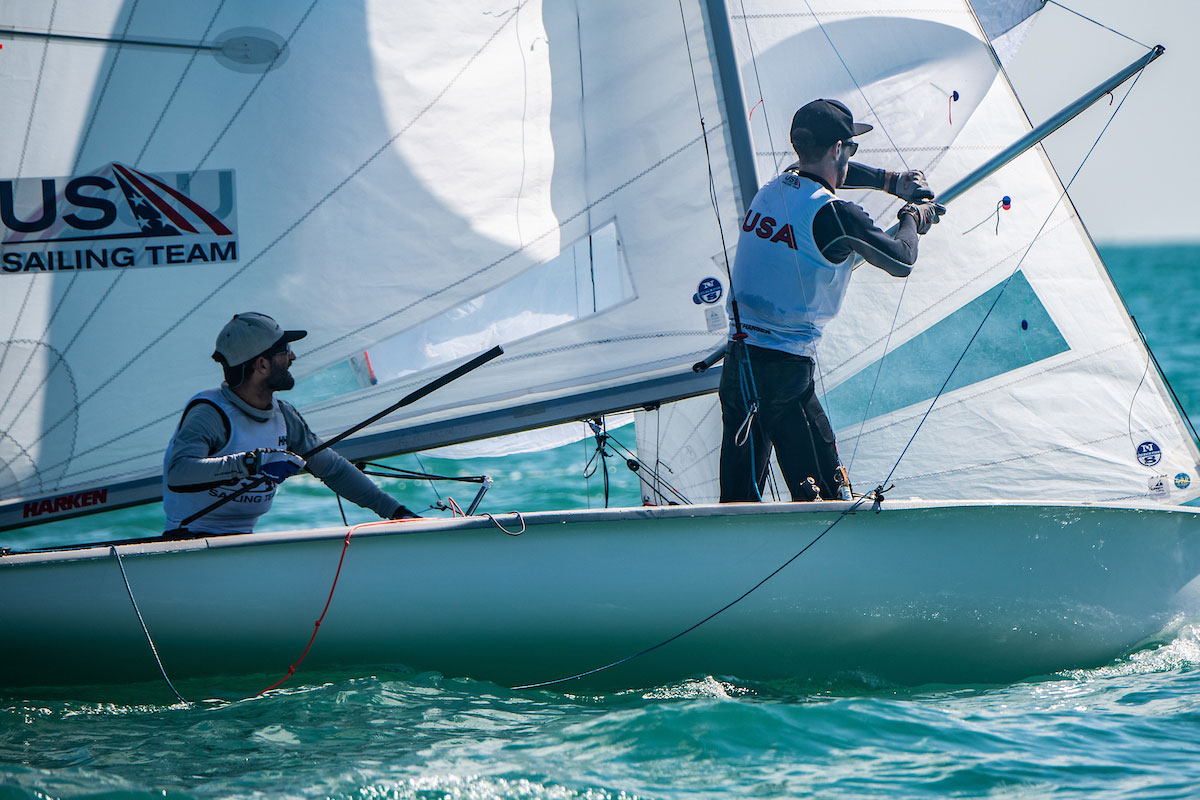
What’s the key to a good 470 spinnaker takedown?
The best spinnaker takedown is when the helm stands up and trims the spinnaker with a sheet in each hand, so when the pole comes down the spinnaker is still flying. At the last possible moment, the crew grabs the tack and drops it into the sock. The goal is to keep the spinnaker flying as long as possible.
Personal Tip: We always have a windward takedown, because we have a storage bag on each side of the boat.
Doing a 720 penalty turn is slow. What are the keys to minimizing the pain?
Try and synchronize the roll of the boat while minimizing the steering. When crew and helm act as one body, that’s the best. If you can, do the spins almost without the rudder, and start with a tack. On the bearaway, have a nice windward heel into the jibe, again minimizing the steering by working the bodies together. Always tack first, even from downwind.
How easily does the 470 broach or capsize?
Not that easily. Downwind, or reaching in strong breeze, you might broach if you lose control of the rudder because it ventilates, which happens quite often. Or in strong breeze if you lose your balance, or roll the boat too much in the jibe, you definitely will capsize.
How do you recover from a 470 capsize?
Try not to let the boat fully capsize, unhook the spinnaker pole, and right the boat.
What are the most common boat helming mistakes made in the 470 class?
When you are not in control of the boat. Control the feel of the boat upwind and downwind, and you’re going to do well.
Any suggestions for drills to improve 470 boat handling?
Sailing a figure eight in any wind will take you far. Circling around one mark, even in 20, 25 knots, is a really good drill to be strong in boat handling. Or set up a short race course that gives you just enough room to put up the kite, do one jibe, take it down, and go back upwind. That will improve your boat handling in all conditions.
Related Articles

Kevin Burnham, Olympic gold and silver medallist in the 470, has died at the age of 63, just week after the passing of another legend of the class, Dave Barnes. This photo says so much about the force of nature that was Kevin Burnham...

Hannah Mills gives an insight into what it took to win the 470 Women's gold medal with Saskia Clark at Rio 2016. " I was completely unprepared for how different an experience Rio would feel to London. London felt like the official Games, where you absolutely knew it was the Olympics and everything was where it should be. Rio however, felt like a very relaxed Games where you really had to focus on the fact it was the Olympics and this was it!!!"

Mike Holt (USA), World 5O5 Champion 2014, 2015, 2017, talks about setting up a 5O5

USA 470 Olympian Dave Hughes explains the multi-tasking challenges of trapezing whilst attempting to execute sail trim, strategy and tactics, at world-class level...

How much difference does upwind pumping add to a 470's boatspeed?

Luke Patience won Olympic silver with Stu Bithell at London 2012. One of the deep thinkers in the sport, Patience is a big believer that you need to understand the ‘why’ of what you do, the reasons behind why the things you do.

Hannah Mills & Eilidh McIntyre are out to defend their 470 class world title as they go into battle against the world’s best just four months out from Tokyo 2020. The 2020 470 World Championships in Palma will be one of the last opportunities for Mills and McIntyre to test themselves against their rivals before the Olympics....

On this month’s show we start a new series building up to this summer’s Olympic Games. We start by looking at the favourites for medals in the 470 and bring you our guide to the sailing venue in Enoshima...

Dave Hughes talks about how he won the 470 European Championships recently with helmsman Stu McNay. This American team is really starting to set the pace. Dave also talks about the loss of his great friend Trevor Moore....
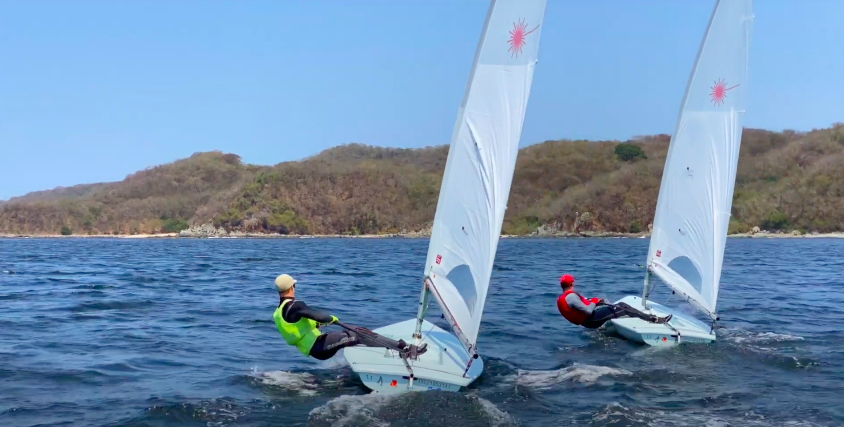
It's an absolutely critical skill any boat. Whether or not you sail a Laser/ ILCA dinghy, this is still a great source of tips for holding your lane...

A great example of how to make your training fun and unpredictable...
| Are you signed up to ? It's our free monthly newsletter full of advice, tips and techniques from the world's best sailors. What's more, we'll send you a free copy of our ebook – guaranteed to bring some fresh ideas to your sailing. Click the button below and take your sailing to the next level!
|
An Olympic-class racing dinghy, the 470 is the double-handed sailing discipline for both men and women. The strict, one design class has proven itself as an Olympic event since 1976. Originally an open class, it split into men’s and women’s divisions in 1988.
- Class Experts
- Links & resources
Choose a Team Member
Alejandro Irigoyen
- P: +54 911 5421 9803
- E: [email protected]
Alejandro Irigoyen started sailing when he was 12 years old. His father was a keen sailboat racer at the Yacht Club Argentino, and Alejandro spent his weekends racing and living aboard the family’s wooden S&S Finisterre. By the time he graduated high school, Alejandro knew he wanted to dedicate his life to sailing, so he started studying yacht design. He started his sailmaking career in 1982 working for Hood, before starting his own Sobstad loft. In 2001, Alejandro joined the Quantum Sails family. “It was a natural decision,” he said. “I shared the same view and goals as the founding group.” Though he’s sailed in various classes, Alejandro’s expertise includes Optimist, Cadet, 470, Snipe, J/24, J/70, J/105, Soto 33, and Soto 44 classes. Whether he’s sharing his class knowledge and experience, or helping customers organize their campaigns and training, Alejandro’s passion for excellence provides the best service, products, and support for his customers.
- Nationality: Argentina
- Current Town:
Career highlights
- 15-time National Champion in Argentina, Chile, Brazil, and Peru
- 6-time South American Champion in Cadet, 470, J/24, and Soto 40 as helm/skipper
- Coached 470 Olympic bronze medalist teams in 2000 & 2012
- Coached Soto 40 Team Negra in 2010 & 2013
- Has successfully raced as helm/trimmer/tactician on board various One Design and offshore boats at regattas in more than 30 countries around the world
Carlos Rodriguez
- P: +34-93-2242778
- E: [email protected]
When Carlos Rodriguez was four years old, his mother worked for a One Design boat company. She started taking him to races on the weekends, and it didn’t take long before Carlos started racing. When he was just 17 years old, the Catalonian Sailing Federation offered him a job, and he’s been sailing ever since.
Carlos started working at a Quantum Sails loft in 1996. After learning how to make sails on the floor, service sails, and design sails, he became a salesman. Carlos not only spends almost every weekend racing in local and national events with Quantum customers, serving as a skipper, tactician, and jib-spinnaker-mainsail trimmer, he also trims masts, finds crew members, provides certificate optimization in ORC, and even services sails during races. Carlos now serves as the Spain Regional Manager and works hard to make Quantum Sails Spain a full-service, one-stop loft for all sailing needs.
professional racing crew member since 1995, Carlos has an extensive resume, including experience on Mega Yachts, ORC boats, IRC boats, One Design, etc. He has also won several races like Copa del Rey in Palma, Maxi Yacht Cup, Swan Cup, and many important races in the Spanish ORC circuit.
- Nationality: Spain
- Position: Spain Regional Manager
- Spain Tir (X-362)
- Camper and Trasmediterranea (First 40, 7)
- Freixenet (JV46)
- Zurich (GP42 and BC41)
- Fermax (GP42)
- Santa Anna (JV57)
- Siemmens Mobile (Farr 42)
- Icaro (D44)
- Garmin (DK46)
- Iberdrola (Soto 40)
- Copa del Rey Champion, 2007, 2008, 2009
- ORC Non-Corinthians World Championship – 3rd place, 2007
- Two-time ORC Spanish Champion
Fernando Sallent
When Fernando Sallent was 10 years old, a friend of his father bought him an Optimist dinghy. From then on Fernando was hooked. As an adult, his first business venture was Technik Boats, a small Optimist shipyard, but it was the physics of sailing that really intrigued him. "I always had a passion for finding a way to make boats go faster," he said.
That passion led him to La Industrial Velera Marsal, a local sailmaker who made all of his sails by hand. Fernando worked there learning the basics of sailmaking while also running Technick Boats. After taking a year off to serve in the military, he decided to leave Technick and joined Toni Tio Sail Loft. Toni Tio was only designing cruising sails at the time, so Fernando came on board to lead the One Design section of the company.
In 1996, Toni and Fernando visited the Quantum Annapolis loft, and in 2000 they joined the Quantum Sails team. Fernando continues to design One Design sails as he works to help his clients improve on the water. "I love seeing how sailors do better when the product is improved," he said. "I love the fine tuning of boats and sails on the water."
An accomplished sailor, Fernando also works as a coach for many teams. He coached the 470 women's world, Olympic, and European champions in 1992 and the 470 women's world champions in 1995. Since 2000, he has advised the Norwegian, Swedish, Swiss, and Spanish Olympic teams.
- Position: Sail Designer
- Current Town: Barcelona
- 1992 Olympics – 470 men’s gold medal, 470 women’s gold medal, Europe Dinghy silver medal
- 1996 Olympics – 470 women’s gold medal, 470 men’s bronze medal
- 2000 Olympics – Europe Dinghy bronze medal
- 2004 Olympics – Europe Dinghy gold medal, 470 women’s silver medal, 470 men’s bronze medal
- 2008 Olympics – Tornado gold medal, 470 men’s bronze medal
- 2012 Olympics – 470 women’s gold medal
- 470 Class – 1992-95 men’s world champion,
- 1992/1995-96/2005/2011 women’s world champion
- Optimist – 1993-96/2004 world champion
- Europe Dinghy – 2003-04/2010 women’s world champion
- 2004-06/2010-12 men’s world champion
Maxim Logutenko
- P: +14014998651
- E: [email protected]
Maxim started working in the Quantum Russia office in 2010 after a lifetime of sailing experiences. He started sailing on Optimist boats when he was six years old and became a champion sailor. He is a two-time All-Japan Mini Hopper and Sea Hopper Junior Champion, two-time Quarter Ton class All-Russia Champion, and the 2008 Dragon European Champion. Maxim is also experienced on Cadet, 470, 49er and RC44 boats. When he's not sailing, Maxim also coaches, including the Russian Yngling class for the 2008 Olympics. When Maxim decided to transition into selling sails, he chose Quantum because of its state-of-the-art design and development, as well as Quantum's reputation for quality. He is excited to work with new and repeat clients to help everyone find the fastest, most competitive sails.
- Nationality:
- Position: Sail Consultant
- 2021 Rolex Middle Sea Race, ORC 4, 2nd
- 2003 Rolex Sydney Hobart, Sydney 38, 3rd
- Rolex Fastnet Race Skipper
- Several coastal regattas in Italy/France and Spain as a skipper
- 2007-2008 – Russian Olympic Sailing Team Coach, Yngling class, 4th place
| Date | Regatta | Result |
|---|
- 470 Class Association Website
Youth Corner: Hollywood Moves That Don't Work in Big Fleets
Youth Corner: How to Practice Before the Big Race
Youth Corner: Make Your Dinghy Sails Last Longer
Youth Corner: How to Get the Most Out of Your Coach
This website uses cookies and collects usage statistics. Privacy Policy
Us, too. We pour that passion into each of our newsletters to help you enjoy sailing even more.
- Milano Cortina 2026
- Brisbane 2032
- Olympic Refuge Foundation
- Olympic Games
- Olympic Channel
- Let's Move
2024 470 World Sailing Championship: Preview, schedule and athletes to watch

As the first major event of the year for the 470 class kicks off, here is everything you need to know ahead of World Championship, which begins on 24 February
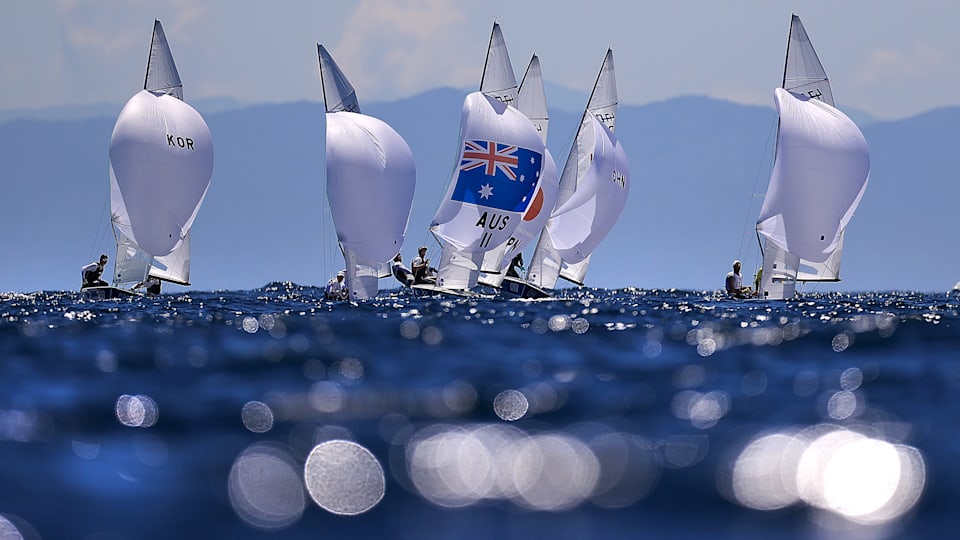
(Clive Mason/Getty Images)
Kicking off on 24 February, sailing ’s 470 class will see their first major event of the year: the 2024 World Championships.
A total of 63 International teams will drop into the waters of Arenal, Palma Spain for six days of head-to-head competition as the best sailors from across the globe fight for the world title.
The Championship also serves as the European and North American continental Olympic Qualifier , so stakes are high for those with their eyes on an Olympic quota.
The class, named 470 after the overall length of the boat being 4.70 metres, is a double-handed monohull dinghy with a mixed crew of one male and one female athlete in each rig.
President of the International 470 class and five-time Greek Olympian, Andreas Kosmatopoulos , said “We’re going to see a great competition in Palma.
“There are a number of Olympic qualifying spots being decided here, for Africa, South and North America, and one place for Europe. So the pressure is on, everyone will be at their peak and no one will be holding back.”
Since Tokyo 2020, the men’s and women’s 470 classes have merged into a mixed event, leaving athletes and spectators with one big question: who will be at the helm?
According to Kosmatopoulos, “there is obviously an element of strength and fitness required in the 470 but it is primarily a game of athletic chess. It doesn’t seem to matter who is on the rudder, who is steering the boat, what’s more important is the way that the helm and crew function together as a team. So with 470 Mixed we have the perfect test for men and women.”
As National Olympic Committees have the exclusive authority for the representation of their respective countries at the Olympic Games, athletes' participation at the Paris Games depends on their NOC selecting them to represent their delegation at Paris 2024
Click here to see the official qualification system for each sport.
- How to qualify for sailing at Paris 2024
Athletes to Watch
Japan’s Keiju Okada and Miho Yoshioka are the current world title holders, who cruised their way to gold in the medal race at the 2023 World Championships in the Hague . The two competed separately at the Tokyo 2020 Olympics on their home turf, both having finished in seventh in their respective men’s and women’s classes.
Having joined forces to compete in the mixed class, the pair is strong across a range of conditions and are looking to defend their title in Palma.
Spain’s Jordi Xammar Hernandez and Nora Brugman will not only be competing on their home turf, but have consistently landed on the podium since the 470 class turned to the mixed format. They were runners up in both the 2022 and 2023 World Championship, and will be looking to top that this year.
Great Britain’s two-time Olympian Chris Grube and partner Vita Heathcote are strong contenders for the title, along with GB teammates Martin Wrigley and Bettine Harris .
France, Germany and People’s Republic of China could also be standouts among the competitive field in Spain.
Jordi Xammar and Nicolas Rodriguez Garcia-Paz of Team Spain compete in the Men's 470 class at the Tokyo 2020 Olympic Games.
470 World Championships Schedule
Monday 26 february.
- Practice race day and end of registration and measurement
Tuesday 27 February
- First race day of the championship, scheduled for 1200 local time (12:00 pm CET/6:00 am EST)
Wednesday 28 February - Saturday 2 March
- Qualifying races
Sunday 3 March
- Sixth and final day of competition, where the top 10 teams will race each other in the concluding medal race
Related content
Marshall and ford mccann: u.s. sailing’s identical twins vying for the same spot on the 2024 olympic team, how the us olympic sailing team is taking shape for paris 2024 , paris 2024 olympics: vishnu saravanan obtains india’s first quota in sailing, ireland's eve mcmahon secures quota spot for paris 2024 sailing regatta.
@media screen and (min-width: 70em){.css-1c47y9x{color:var(--chakra-colors-blue\.brand);}} 470 buy/sell second hands, ads and prices
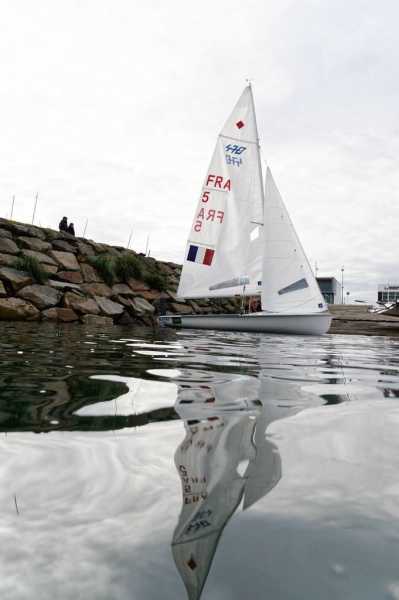
the last 470 ads at the best price

470 Parker for sale

470 Morin for sale in La Croix-Valmer
470 sails for sale in Paris

470 Nautivela for sale in La Rochelle

470 Mackay Boats à vendre à Pariso
470 presentation
The 470, a fine and very seaworthy dinghy.
With close to 38,000 units distributed worldwide, there are many opportunities and good deals are commonplace. This boat is also perfectly adapted for cruising for all sizes. With little canvas, the 470 is perfectly suited to mixed crews and is particularly at ease in the breeze.
The most well-known shipyards are : Morin, Nautivela, Mackay, Ziegelmayer.
470 dinghies prices, brands, program
For leisure: aim for an old 470 from the Morin, Lanaverre, Parker or Roga yards. These boats will be affordable, but will require some refurbishment or restoration. The budget for this programme starts at 500 or 1000€ depending on the condition, the equipment and the level of maintenance.
For a mixed programme, touring, local regatta, a more recent boat, with better performance and better sails will be preferred, a Nautivela from the 2000s for example will do the job well, you should aim for between 2000 and 3000€ to find a second-hand boat in good condition and well equipped.
For a regatta and competition programme, you will need a high-performance 470. A rigid, well equipped and optimised boat: the price will necessarily be higher and you should aim for 470s produced by Mackay or Ziegelmayer.
A new 470 from Mackay Boats for example is sold for over 20,000€. Second hand 470s can be found for as little as 500€.
Some figures of the 470 sailing dinghy :
Min price :
Max price :
Average price :
Median price :
Available boats :
Launch year :
Boat designer :
André Cornu
Used 470 price table
| Advert title | Builder | Year | Price |
|---|---|---|---|
|
| Parker | 1964 | 1650€ |
| Morin | 1948 | 1500€ |
| North Sails | 2000 | 450€ |
| Nautivela | 2013 | 7500€ |
| Mackay Boats | 1972 | 3800€ |
| Morin | 1972 | 850€ |
| Morin | 1973 | 500€ |
| Mackay Boats | 2015 | 5000€ |
| Ziegelmayer | 2005 | 3400€ |
| Lanaverre | 2000 | 2950€ |
| Mackay Boats | 2000 | 3500€ |
| North Sails | 2000 | 450€ |
| Mackay Boats | 2019 | 7500€ |
| Ziegelmayer | 2001 | 2900€ |
| Nautivela | 1999 | 3200€ |
| - | 2000 | 500€ |
| Topper | 2000 | 300€ |
| - | 2000 | 100€ |
| - | 2000 | 2450€ |
| Morin | 2000 | 1000€ |
| Ziegelmayer | 2019 | 10998€ |
| - | 2000 | 800€ |
| North Sails | 2000 | 300€ |
| North Sails | 2000 | 348€ |
| Ziegelmayer | 2013 | 1€ |
| - | 2000 | - |
| North Sails | 2000 | 300€ |
| North Sails | 2000 | 550€ |
| - | 2000 | 1000€ |
| Mackay Boats | 2015 | 9900€ |
| North Sails | 2000 | 190€ |
| North Sails | 2000 | 400€ |
| - | 2000 | 120€ |
| - | 1978 | 1600€ |
| North Sails | 2000 | 800€ |
| Mackay Boats | 2008 | 4500€ |
| - | 2000 | 2000€ |
| - | 1973 | 1100€ |
| - | 2000 | 15€ |
| - | 2000 | 5€ |
| - | 2000 | 5€ |
| - | 1995 | 990€ |
| Mackay Boats | 2016 | 6800€ |
| - | 800€ | |
| Morin | 1984 | 800€ |
| Mackay Boats | 2015 | 10000€ |
| - | 100€ | |
| - | 2013 | 2800€ |
| Nautisails | 430€ | |
| Nautisails | 250€ | |
| Mackay Boats | 2015 | 7000€ |
| Mackay Boats | 2015 | 10600€ |
| - | 100€ |
Great choice! Your favorites are temporarily saved for this session. Sign in to save them permanently, access them on any device, and receive relevant alerts.
- Sailboat Guide
470 is a 15 ′ 5 ″ / 4.7 m monohull sailboat designed by Andre Cornu and built by Fountaine Pajot, MacKay Boats Ltd., Parker Yachts, Nautivela, and Mader Bootswerft starting in 1963.

Rig and Sails
Auxilary power, accomodations, calculations.
The theoretical maximum speed that a displacement hull can move efficiently through the water is determined by it's waterline length and displacement. It may be unable to reach this speed if the boat is underpowered or heavily loaded, though it may exceed this speed given enough power. Read more.
Classic hull speed formula:
Hull Speed = 1.34 x √LWL
Max Speed/Length ratio = 8.26 ÷ Displacement/Length ratio .311 Hull Speed = Max Speed/Length ratio x √LWL
Sail Area / Displacement Ratio
A measure of the power of the sails relative to the weight of the boat. The higher the number, the higher the performance, but the harder the boat will be to handle. This ratio is a "non-dimensional" value that facilitates comparisons between boats of different types and sizes. Read more.
SA/D = SA ÷ (D ÷ 64) 2/3
- SA : Sail area in square feet, derived by adding the mainsail area to 100% of the foretriangle area (the lateral area above the deck between the mast and the forestay).
- D : Displacement in pounds.
Ballast / Displacement Ratio
A measure of the stability of a boat's hull that suggests how well a monohull will stand up to its sails. The ballast displacement ratio indicates how much of the weight of a boat is placed for maximum stability against capsizing and is an indicator of stiffness and resistance to capsize.
Ballast / Displacement * 100
Displacement / Length Ratio
A measure of the weight of the boat relative to it's length at the waterline. The higher a boat’s D/L ratio, the more easily it will carry a load and the more comfortable its motion will be. The lower a boat's ratio is, the less power it takes to drive the boat to its nominal hull speed or beyond. Read more.
D/L = (D ÷ 2240) ÷ (0.01 x LWL)³
- D: Displacement of the boat in pounds.
- LWL: Waterline length in feet
Comfort Ratio
This ratio assess how quickly and abruptly a boat’s hull reacts to waves in a significant seaway, these being the elements of a boat’s motion most likely to cause seasickness. Read more.
Comfort ratio = D ÷ (.65 x (.7 LWL + .3 LOA) x Beam 1.33 )
- D: Displacement of the boat in pounds
- LOA: Length overall in feet
- Beam: Width of boat at the widest point in feet
Capsize Screening Formula
This formula attempts to indicate whether a given boat might be too wide and light to readily right itself after being overturned in extreme conditions. Read more.
CSV = Beam ÷ ³√(D / 64)
2 person centerboard class with trapeze. An Olympic class since 1976. Separate events for men and women since 1988. The 470 is sailed in more than 60 countries. Spinnaker: 140 sq. ft. 1 Trapeze.
Embed this page on your own website by copying and pasting this code.
- About Sailboat Guide
©2024 Sea Time Tech, LLC
This site is protected by reCAPTCHA and the Google Privacy Policy and Terms of Service apply.
Sailing at the 2024 Olympics: What to know, rules, schedule
Here's all the information you need to know about sailing, which returns to paris this summer at the 2024 olympics., by logan reardon • published june 26, 2024.
One of the oldest Olympic sports is returning to its roots at the 2024 Summer Games .
Sailing made its debut as an Olympic event at the 1900 Games , which were held in ... Paris . France won the most sailing medals that year, and the sport has been a mainstay ever since.
Now, with the Olympics returning to Paris , sailing will again be in the spotlight this summer. Here's all the info you need to know about the sport:
What is sailing?
Sailing is the art of moving a boat using only waves and the wind. While it used to be the way that people traveled and traded, now it's mainly used for sporting and leisure.

2024 Paris Olympics: See dates, sports, how to watch and more
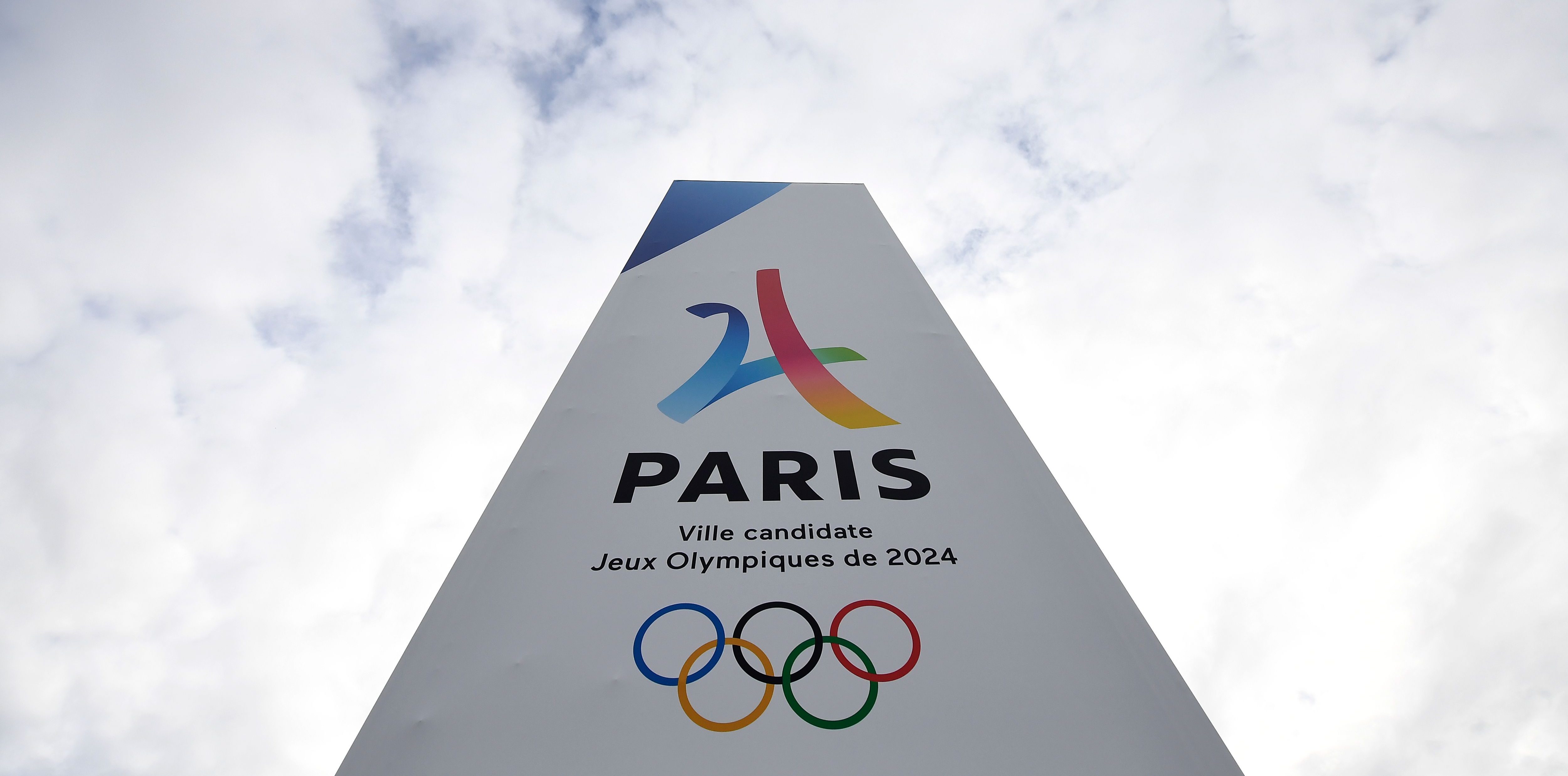
Here are the rules for the 2024 Olympics in Paris

Get to know Team USA Olympians ahead of the 2024 Paris Olympics
How does sailing work at the olympics.
There are 10 different sailing events that will be contested at the 2024 Olympics, with medals handed out for each competition. Here's a brief look at each:
Men's events
IQFoil: One person windsurfing where the athlete stands up and guides the single sail.
Formula Kite: One person kitesurfing featuring a foil kite and a board with a hydrofoil.
ILCA 7: One person using a standard rig (singlehanded dinghy).
49er: Two people, one at the helm making tactical decisions and steering and one doing most of the sail control.
Women's events
IQFoil: Same as the men's event.
Formula Kite: Same as the men's event.
ICLA 6: Same as the men's event with a smaller rig.
49erFX: Same as the men's event with a slightly different rig.
Mixed events
470: Two people (one man, one woman) guiding a 470 cm boat.
Nacra 17: Two people (one man, one woman) using a performance catamaran.
Where is sailing being held at the 2024 Olympics?
All sailing events for the 2024 Olympics will be held at Marseille Marina . The venue is located in southern France on the Gulf of Lion , which is part of the Mediterranean Sea.
What is the schedule for sailing at the 2024 Olympics?
Sailing events will take place from July 28 through Aug. 8 , with series races and medal races taking place each day. Here's a day-by-day breakdown:
July 28: Men's and women's IQFoil (series races), men's 49er (series races), women's 49erFX (series races)
July 29: Men's and women's IQFoil (series races), men's 49er (series races), women's 49erFX (series races)
July 30: Men's and women's IQFoil (series races), men's 49er (series races), women's 49erFX (series races)
July 31: Men's 49er (series races), women's 49erFX (series races)
Aug. 1: Men's and women's IQFoil (series races), men's 49er (medal race), women's 49erFX (medal race), men's ICLA 7 (series races), women's ICLA 6 (series races)
Aug. 2: Men's and women's IQFoil (medal races), men's ICLA 7 (series races), women's ICLA 6 (series races), mixed 470 (series races)
Aug. 3: Men's ICLA 7 (series races), women's ICLA 6 (series races), mixed 470 (series races), mixed Nacra 17 (series races)
Aug. 4: Men's and women's Formula Kite (series races), men's ICLA 7 (series races), women's ICLA 6 (series races), mixed 470 (series races), mixed Nacra 17 (series races)
Aug. 5: Men's and women's Formula Kite (series races), men's ICLA 7 (series races), women's ICLA 6 (series races), mixed 470 (series races), mixed Nacra 17 (series races)
Aug. 6: Men's and women's Formula Kite (series races), men's ICLA 7 (medal race), women's ICLA 6 (medal race), mixed 470 (series races), mixed Nacra 17 (series races)
Aug. 7: Men's and women's Formula Kite (series races), mixed 470 (medal race), mixed Nacra 17 (medal race)
Aug. 8: Men's and women's Formula Kite (medal races)
What countries are the best at sailing?
When it comes to sailing, two nations are traditionally dominant: Great Britain and the United States.
Great Britain leads all nations in sailing gold medals (31) and total medals (64), while Team USA has the most silver medals (23) and second-most total medals (61).
Norway is third in gold medals with 17, trailing only Great Britain and the U.S. France, meanwhile, is third in total medals with 49.
In recent years, Great Britain has only gotten better at sailing. The country has won the most sailing medals at five of the last six Olympics, only losing out to Australia in 2012. The Brits won three golds and five total medals at the 2020 Tokyo Olympics, while the U.S. was shut out.
This article tagged under:

2024 470 GERMAN NATIONAL CHAMPIONSHIP OPENED WITH TWO EXCITING RACES

WATCH THE REPLAYS OF PARIS 2024 OLYMPIC GAMES RACES FOR FREE

KEIJU OKADA / MIHO YOSHIOKA WINNERS OF 2024 470 JAPAN NATIONAL CHAMPIONSHIP
Schedule of 2025 470 class championships.
- All featured news

2024 470 LATVIAN NATIONAL CHAMPIONSHIP CONCLUDED IN ENGURE

BRITISH WOMEN’S AND YOUTH AMERICA’S CUP SQUADS UNVEILED

JONATHAN MARTINETTI AND HIS TEAM WON THE 2023 LIGHTNING WORLD CHAMPIONSHIP

EX 470 SAILORS WIN 1ST & 2ND TRANSAT JACQUES VABRE CLASS 40
- All notices
- Now-Upcoming
- Featured events
- All results
- 470 Championships Complete Results Archive
- Sailing World Rankings
- 470 Championship Organization Plan
- World Cup Series
- Bid for a 470 Championship
- The 470 at the Olympics
- 470 Olympic Medallists - 1976 to Date
- Sailors in TOKYO 2020 Olympics
- World Championship
- Junior World Championship
- Open European Championship
- Junior European Championship
- Master’s Cup
- African Championship
- North American Championship
- South American Championship
- Asian Championship
- Oceania Championship
- The First 470
- Why Sail the 470?
- About the 470
- Management Committee
- 470 Committees
- 470 Class Membership
- Advertise on the 470 Website
- Make a Payment
- 470 General Assembly Meetings
- 470 Class Documents
- Constitution and By-Laws
- 470 Great Book
- Useful links
- 470 Support & Development Program 2018-2024
- 470 ICA SUPPORT PROGRAMS FOR 2024
- André Cornu Grant
- 470 Athlete and Coach Clinics
- Financial Support Programmes
- You Can Help Programme
- 420 and 470 Joint Programmes
- 470 Race Officials Programme
- 470 Tuning Guides and Boat Preparation
- All About Measurement
- 470 Class Rules
- Buy 470 Sail Stickers
- 470 Aerodynamics
- 470 Equipment Manufacturers
- 470 Class Measurers
- Equipment Used at 470 Championships
- List of suppliers

2021 Worlds Vilamoura POR

2019 Worlds Enoshima JPN
- All photo galleries

2024 Europeans Cannes FRA

Allianz Sailing World Championships The Hague NED
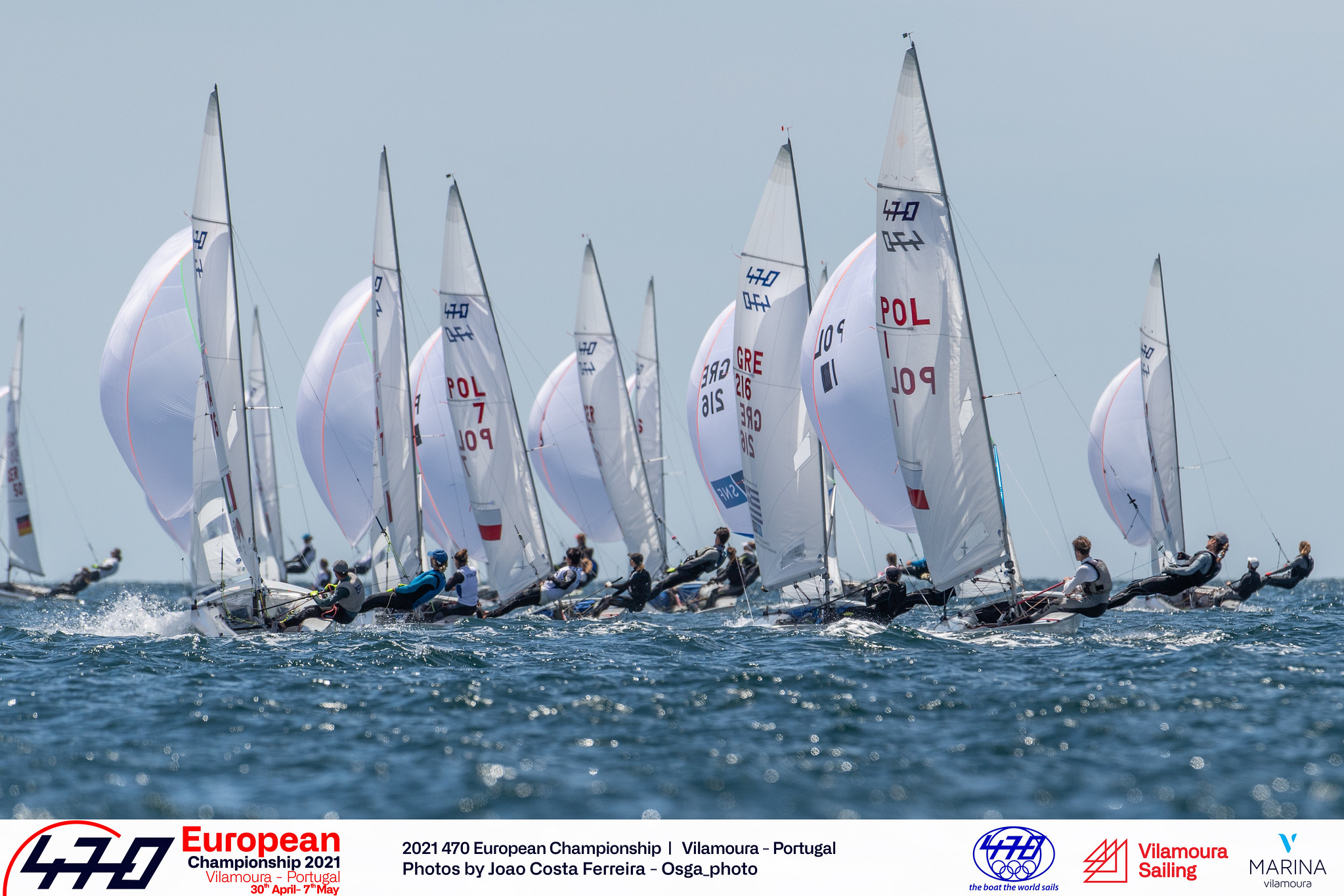
2021 Europeans Vilamoura POR
- All video galleries
- News + Views
- Youth Pathway
- 470 IN 2024
- Why Sail 470?
Buy and Sell

Use 470 Groups on Facebook or even Facebook Marketplace to sell your 470 equipment or search for new kit. You can upload and manage your adverts yourself, once you join the two groups.
The Int' 470 Class Assocaition encourages everyone to post all information on the following two groups on Facebook.
- https://www.facebook.com/groups/146676016035936 - https://www.facebook.com/groups/974096826075540

IMAGES
VIDEO
COMMENTS
The 470 is a fibreglass planing dinghy with a centreboard, Bermuda rig, and spinnaker, designed by André Cornu in 1963. It is a World Sailing International Class and has been an Olympic class since 1976, with separate events for men and women and a mixed event from 2024.
The 470 is an Olympic Class Dinghy recognised by ISAF. Sailed by both men and women, it was designed in 1963 by the Frenchman André Cornu as a modern fibreglass planing dinghy. The name is the overall length of the boat in centimeters (the boat is 4.70 metres long). The hull is fiberglass with integral buoyancy tanks.
Learn about the 470, a two-person Olympic class with trapeze and centerboard. Find sailboat calculations, design and builder information, and sailboat forum topics.
The 470 is a fibreglass planing dinghy sailed by two people, with a sail area of 12.7m2 and a weight of 120kg. It is an Olympic class since 1976, sailed by men and women in more than 60 nations and 20 different medal-winning countries.
The 470 is a double handed, mixed crew Olympic yacht. The 470 is a light and narrow boat (length 4.7m and beam 1.7m with a weight of 120kg), that responds easily and immediately to body movement. The skipper is normally smaller and lighter (1.65m to 1.8m and 55kg to 65kg) and the crew is taller (1.75m to 1.85m yet only 65kg -75kg).
Find out the latest news, results, rankings and events of the 470 sailing class, the Olympic mixed two-person dinghy. Learn more about the 470 boat, its history, design and performance.
Learn about the 470 sailing boat, a two-person dinghy class used for racing and recreational sailing. Find out its size, rigging, performance, Olympic history, and global popularity.
Learn from a 2016 Olympic gold medalist and North Sails expert how to sail the 470 double-handed dinghy. Find out about rig tuning, sail trim, crew position, and spinnaker choice in different conditions.
The 470, named after the overall length of the boat at 4.70m, is a double-handed monohull planing dinghy; equipped with a spinnaker and trapeze, teamwork is key to success in this boat. The optimum weight for the crew is between 120-135kg.
International 470 Class - Olympic Equipment of choice for the men's and women's two-person dinghy events. Welcome to the 470 Olympic Sailing Channel - the official video platform for the 470.
The story of the 470 - still the best boat to bring sailing to… 470 Sailing - Enjoy the Experience #470Class #BeTheBest #470Sailing. Posted by 470 Olympic Sailing on Wednesday, December 7, 2016 . Share. Facebook; Twitter; LinkedIn; Pinterest; Go to 470.org. Follow 470 Class on Facebook
Learn about the 470, a two-person dinghy that has been sailed at every Olympics since 1976. Find out the class contact information, boat design, and sailing regions in the USA.
Class History The International 470, designed in 1963 by 505 sailor André Cornu, is a high-performance planing dinghy for both men and women. Responsive to weight placement, this two-person one-design is tactically demanding and requires fluid coordination between the skipper and crew. The 470 is easy to sail, but racing and flying the spinnaker from the trapeze provides additional challenges ...
Paris 2024 Olympic Sailing Program Men's One Person Dinghy - ILCA 7 Women's One Person Dinghy - ILCA 6 Mixed Two Person Dinghy - 470 Men's Skiff - 49er
Learn about the history, challenges and rewards of sailing the 470, the Olympic two person dinghy. The 470 is a technical and versatile boat that requires tuning, strategy and skill to master.
Any suggestions for drills to improve 470 boat handling? Sailing a figure eight in any wind will take you far. Circling around one mark, even in 20, 25 knots, is a really good drill to be strong in boat handling. Or set up a short race course that gives you just enough room to put up the kite, do one jibe, take it down, and go back upwind. ...
470. An Olympic-class racing dinghy, the 470 is the double-handed sailing discipline for both men and women. The strict, one design class has proven itself as an Olympic event since 1976. Originally an open class, it split into men's and women's divisions in 1988. Products.
The 470 class, a mixed double-handed dinghy, will compete for the world title and Olympic qualification in Palma, Spain. Find out the athletes to watch, the format and the dates of the event.
Find second hand 470 boats, sails and parts from various shipyards and prices on iWannaboat.com. The 470 is a double sailing dinghy designed for touring, racing and restoration, with over 38,000 units worldwide.
470 is a 15′ 5″ / 4.7 m monohull sailboat designed by Andre Cornu and built by Fountaine Pajot, MacKay Boats Ltd., Parker Yachts, Nautivela, and Mader Bootswerft starting in 1963. ... The lower a boat's ratio is, the less power it takes to drive the boat to its nominal hull speed or beyond. Read more. Formula. D/L = (D ÷ 2240) ÷ (0.01 x ...
470 Tuning Guides and Boat Preparation. The 470 Internationale has close partnerships with many sailmakers around the world. Here are a few tips from those who make 470 sails and boats to help you achieve the best performance from them. Click on the links below:
Welcome to my journey of restoring a classic 470 Olympic class sailboat! In this video, I will dive into the exciting process of breathing new life into this...
470: Two people (one man, one woman) guiding a 470 cm boat. Nacra 17: Two people (one man, one woman) using a performance catamaran. Where is sailing being held at the 2024 Olympics?
Use 470 Groups on Facebook or even Facebook Marketplace to sell your 470 equipment or search for new kit. You can upload and manage your adverts yourself, once you join the two groups. Free Buy and Sell Marketplace. The Int' 470 Class Assocaition encourages everyone to post all information on the following two groups on Facebook.